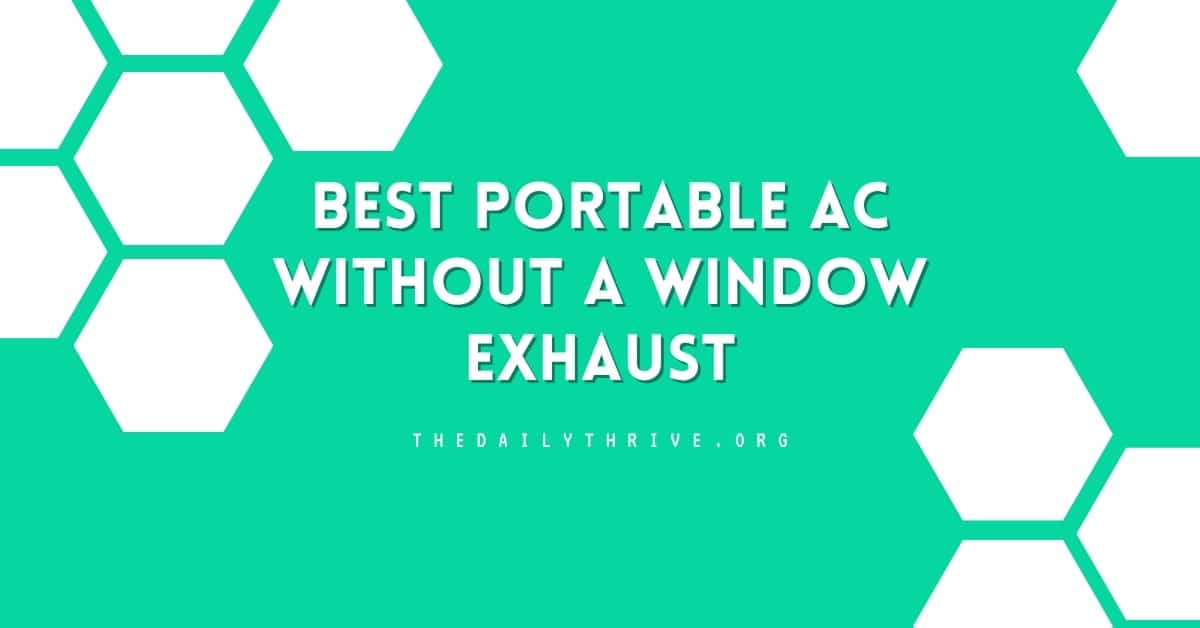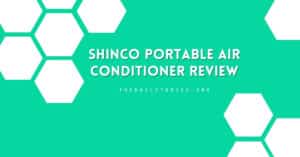When summer temperatures soar, staying cool becomes a priority—but what if you live in a space where traditional air conditioning isn’t possible? Maybe your lease doesn’t allow window modifications, or your room has no accessible outlet for venting hot air. That’s where ventless portable air conditioners come into play.
In this comprehensive 2000-word guide, we’ll explain everything you need to know about cooling options that don’t require venting, how they work, which models are best, and whether they’re right for your space.
What Is a Ventless Portable Air Conditioner?
A ventless portable air conditioner is technically a misnomer. Most devices in this category are actually evaporative coolers (also known as swamp coolers). Unlike traditional portable ACs that need to exhaust hot air outside through a vent hose, ventless units rely on water evaporation to cool the air.
This means:
- No exhaust hose required
- No window kit installation
- Fully self-contained design
However, these units are only effective in specific environments—and understanding their operation is key.
How Ventless Cooling Works
Ventless cooling devices use the principle of evaporative cooling:
- Water is stored in a tank inside the unit.
- A fan pulls warm, dry air through a moistened cooling pad.
- As the air passes through, water evaporates and absorbs heat.
- The cooled, humidified air is blown back into the room.
This method is energy-efficient and environmentally friendly, consuming significantly less power than compressor-based ACs.
Ventless vs. Vented Portable Air Conditioners
| Feature | Ventless AC (Evaporative Cooler) | Vented Portable AC |
|---|---|---|
| Cooling Mechanism | Water evaporation | Refrigerant compression cycle |
| Needs Vent Hose | No | Yes |
| Ideal Climate | Hot, dry areas | Any (with vent access) |
| Adds Humidity | Yes | Typically reduces humidity |
| Energy Use | Low | Moderate to high |
| Maintenance | Frequent water refills, pad cleaning | Condensate drainage, filter cleaning |
| Cooling Performance | Mild to moderate | Moderate to high |
Where Ventless Coolers Work Best
Evaporative coolers are ideal for climates with low relative humidity—typically under 50%. In the U.S., this includes areas like:
- Arizona
- New Mexico
- Nevada
- Inland California
- Parts of Texas
These devices are not recommended for humid environments like the southeastern U.S. or coastal regions, where added humidity can create discomfort and even mold problems.
Top Ventless Portable AC Models in 2025
1. Hessaire MC18M Portable Evaporative Cooler
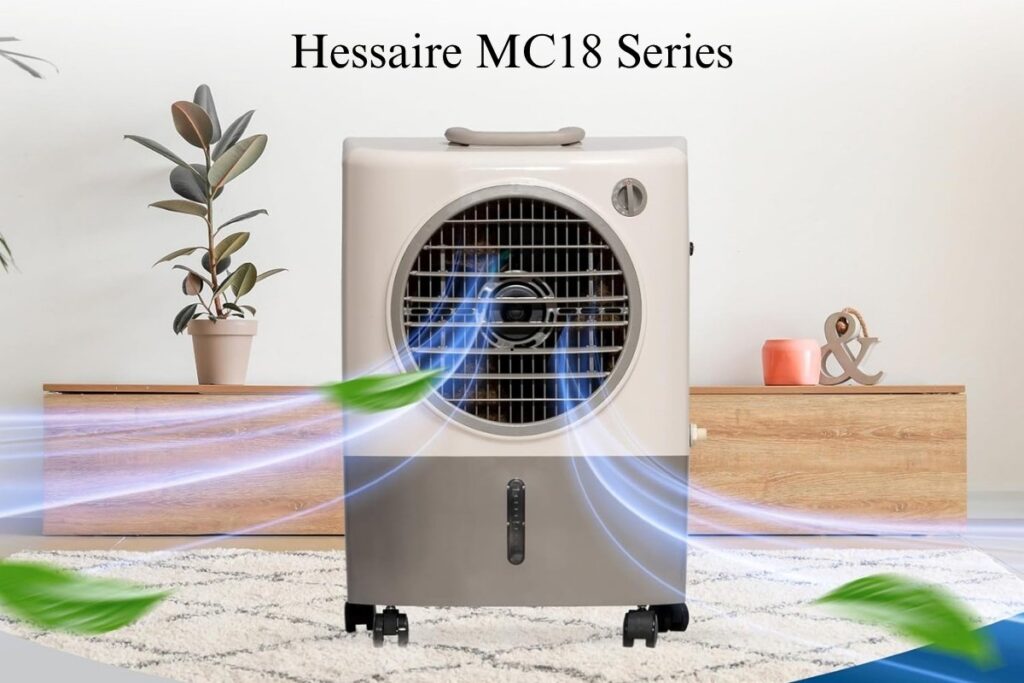
- Cooling Area: Up to 500 sq. ft.
- Water Tank: 4.8 gallons
- Airflow: 1,300 CFM
- Features: Manual controls, low noise, durable build
- Why It’s Great: Ideal for garages, patios, and small homes
2. Honeywell CO60PM Outdoor Evaporative Air Cooler
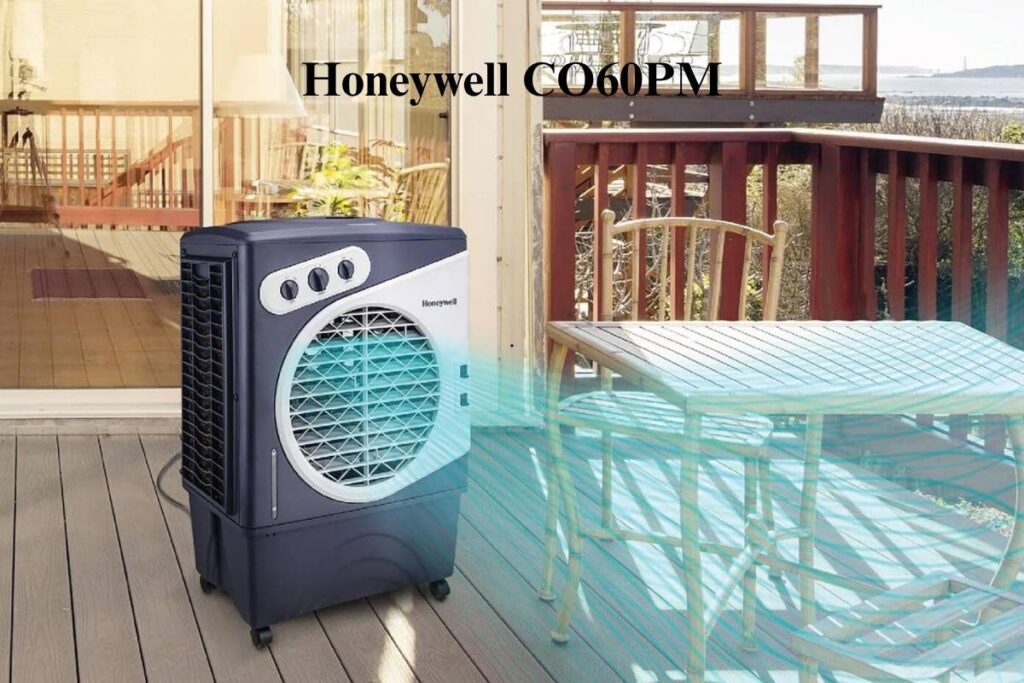
- Cooling Area: Up to 850 sq. ft.
- Water Tank: 15.9 gallons
- Airflow: 1,540 CFM
- Features: Adjustable louvers, continuous water connection option
- Why It’s Great: Powerful and designed for both indoor/outdoor use
3. Vevor Industrial Evaporative Air Cooler
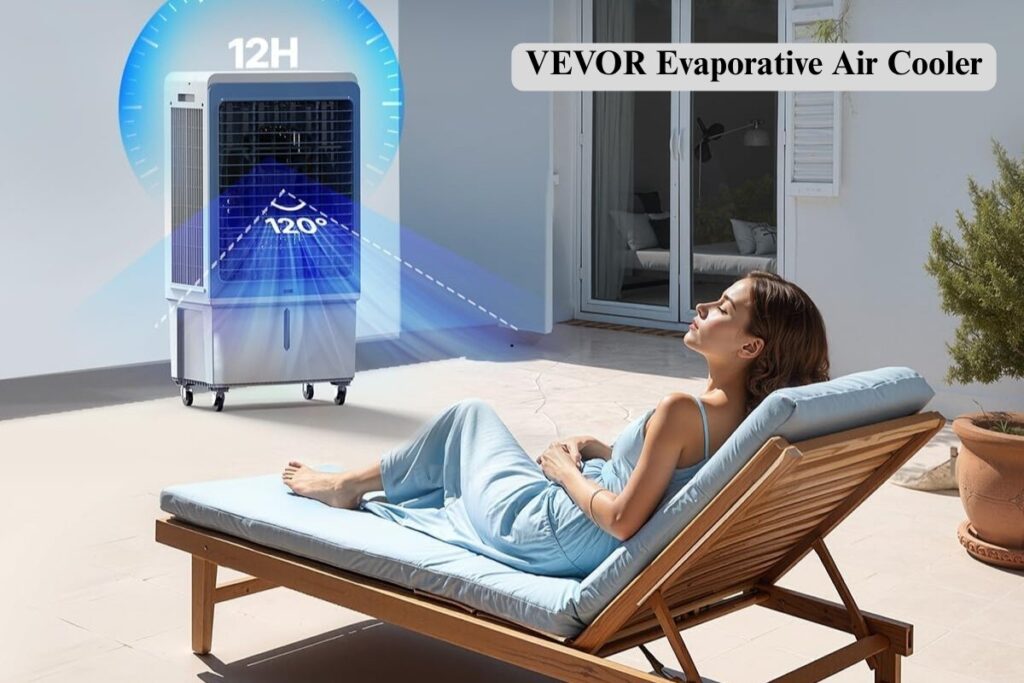
- Cooling Area: Up to 1,200 sq. ft.
- Water Tank: 21 gallons
- Airflow: 2,300 CFM
- Features: Digital controls, caster wheels, auto shut-off
- Why It’s Great: High airflow for workshops and warehouses
4. NewAir AF-310 Portable Evaporative Cooler
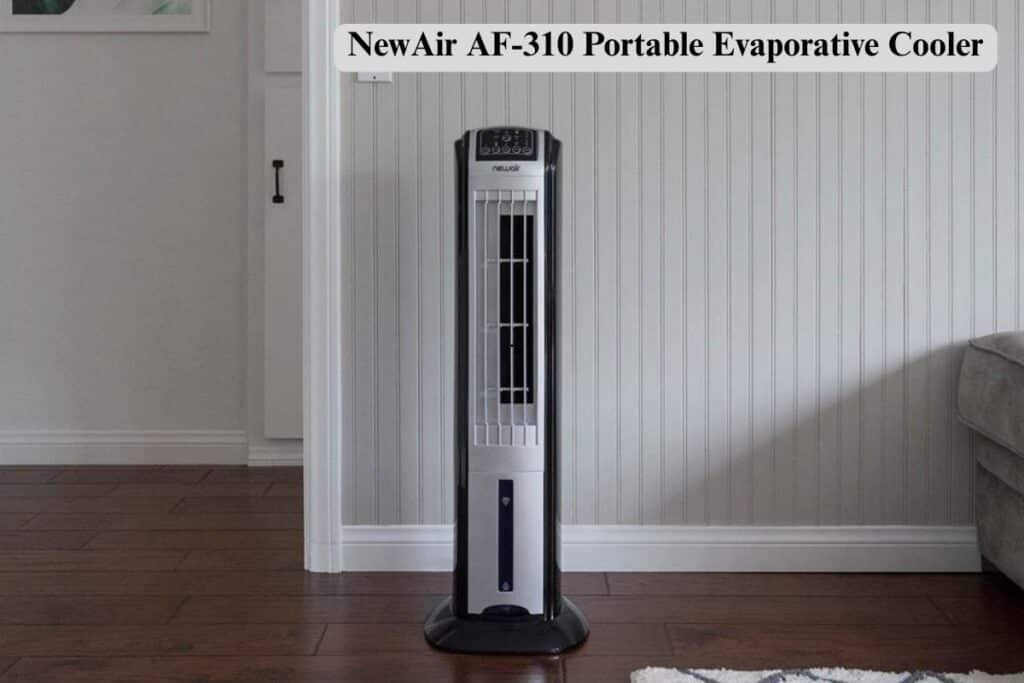
- Cooling Area: Up to 200 sq. ft.
- Water Tank: 1.6 gallons
- Airflow: 312 CFM
- Features: Slim design, oscillation, 3 fan speeds
- Why It’s Great: Best for small rooms and apartments
Pros and Cons of Ventless Portable Air Conditioners
| Feature | Ventless Portable AC | Vented Portable AC |
|---|---|---|
| Installation | No vent needed, just plug in | Requires window/door venting |
| Cooling Power | Moderate (best in dry heat) | Strong (works in all climates) |
| Humidity Impact | Increases humidity | Reduces humidity |
| Energy Efficiency | Very efficient (low power) | Less efficient (higher power draw) |
| Best For | Dry climates, small spaces | Humid climates, larger rooms |
| Maintenance | Refill water, clean pads | Empty condensate, clean filter |
| Cost | $100–$400 | $300–$1,000+ |
If you’re considering a ventless portable air conditioner (like an evaporative cooler or thermoelectric cooler), it’s important to weigh the advantages and limitations before buying. Below, I’ll break down the key pros and cons in simple terms, followed by a quick comparison table for easy reference.
Pros of Ventless Portable Air Conditioners
1. No Need for Window Access or Exhaust Vent
Unlike traditional air conditioners or vented portable ACs, ventless models don’t require an exhaust hose or window installation. This makes them ideal for:
- Apartments with strict window restrictions
- Basements, garages, or rooms without easy window access
- Temporary cooling in RVs, tents, or workshops
2. Lower Upfront & Operational Cost
- Cheaper to buy ($100–$400 vs. $300–$1,000+ for vented ACs).
- Much lower energy use (evaporative coolers consume ~100–300W, compared to 800–1,500W for traditional ACs).
3. Easy to Move & Install
- Lightweight & portable (many have wheels).
- No permanent setup—just plug in, add water, and turn it on.
4. Environmentally Friendly (No Refrigerant)
- Uses water evaporation (evaporative coolers) or thermoelectric cooling, avoiding harmful refrigerants like Freon.
- Better for eco-conscious users who want a greener cooling option.
Cons of Ventless Portable Air Conditioners
1. Limited Cooling Capacity
- Works best in small spaces (100–300 sq ft).
- Not as powerful as refrigerated ACs—temperature drops are usually 5–15°F (not ideal for extreme heat).
2. Adds Moisture to the Air
- Evaporative coolers increase humidity, which can feel sticky or muggy in already-humid climates.
- Not recommended for places like Florida or coastal areas.
3. Not Effective in Humid Climates
- Evaporative cooling relies on dry air—if humidity is above 50–60%, it barely works.
- Thermoelectric coolers (Peltier) are weak and only good for personal cooling.
4. Requires Frequent Water Refills
- Small tanks (1–5 gallons) may need refilling every 2–8 hours.
- Some models need a continuous water hookup (like a garden hose).
Key Buying Considerations
When buying a ventless portable air conditioner (also called an evaporative cooler or swamp cooler), there are several key factors to consider to ensure you get the best performance for your needs. Here are the most important considerations:
1. Climate Suitability
Only purchase if your region is dry enough for evaporative cooling.
2. Room Size
Match the unit’s CFM (cubic feet per minute) rating with your room size:
- 250 CFM: Small bedrooms
- 500–1,000 CFM: Living rooms, workshops
- 2,000+ CFM: Warehouses, outdoor spaces
3. Water Supply
Choose between manual-fill units or those with continuous hose connections.
4. Portability and Footprint
Look for caster wheels and a compact design if you plan to move the unit between rooms.
5. Noise Level
Industrial models can be loud—check decibel ratings if you’re noise-sensitive.
9. Price vs. Performance
- Budget models ($100–$200): Basic cooling for small spaces.
- Mid-range ($200–$400): Better airflow, more features.
- High-end ($400+): Larger capacity, smart features.
To get the best results from a ventless portable AC:
- Use it in well-ventilated spaces to allow airflow and reduce humidity buildup
- Place it near an open window or door for fresh air intake
- Regularly clean the water tank and cooling pads to prevent mildew
- Refill with cold water or add ice for enhanced cooling effect
- Use ceiling fans or standalone fans to circulate cool air further
Alternatives to Ventless Air Conditioners
Since ventless portable air conditioners (like evaporative coolers) have limitations—especially in humid climates or for larger spaces—here are some better cooling solutions depending on your needs.
1. Mini-Split Systems (Ductless ACs)
Best for: Whole-room or whole-home cooling without ductwork.
Key Features:
- No ductwork needed – Uses an indoor wall-mounted unit connected to an outdoor compressor.
- Super energy-efficient – Inverter technology saves power compared to window units.
- Quiet operation – Compressor is outside, so indoor noise is minimal.
- Heating & cooling – Many models are heat pumps, providing year-round comfort.
Downsides:
- Professional installation required – Needs refrigerant lines and electrical work.
- Higher upfront cost – Typically $1,500–$5,000+ installed.
If you own your home and want a permanent, efficient cooling solution. If you need both heating and cooling in one system.
2. Windowless Heat Pump Units
Best for: Apartments or rooms where window ACs aren’t allowed.
Key Features:
- No window venting needed – Uses an indoor/outdoor heat exchange loop (some models are semi-portable).
- More efficient than portable ACs – Doesn’t waste energy venting hot air.
- Can also heat – Works as a reverse-cycle heat pump in winter.
Downsides:
- Still requires an outdoor connection – Some models need a small exterior vent.
- Limited portability – Not as easy to move as a true portable AC.
If you can’t install a window unit (e.g., HOA restrictions). If you want better efficiency than a standard portable AC.
3. Portable ACs with Sliding Door Vent Kits
Best for: Renters or people who need flexibility.
Key Features:
- No window? No problem! – Uses a vertical vent kit for sliding glass doors.
- More powerful than ventless coolers – Actually removes heat from the room.
- Easy to move – Wheeled design for portability.
Downsides:
- Still needs venting – Must exhaust hot air outside.
- Less efficient than mini-splits – Some heat loss through the vent hose.
If you can’t modify windows but have a patio or sliding door. If you need temporary cooling (e.g., apartment living).
4. DIY Ice Box Fans (Emergency Cooling)
Best for: Extremely budget-friendly, short-term cooling.
How It Works:
- Place ice or frozen water bottles in front of a fan.
- The fan blows air over the ice, creating a cool breeze.
Pros & Cons:
- Cheap & easy – Uses items you already have.
- No installation needed – Works anywhere.
- Very short-lived cooling – Ice melts quickly.
- Adds humidity – Can make the room feel damp.
When to Choose This? As a temporary fix during a heatwave or power outage and for personal cooling (e.g., at a desk or bedside).
| Option | Best For | Installation | Cooling Power | Cost |
|---|---|---|---|---|
| Mini-Split System | Whole-home cooling | Professional | ★★★★★ | $$$$ ($1.5K+) |
| Windowless Heat Pump | Apartments, no window access | Moderate | ★★★★☆ | $$$ ($800+) |
| Portable AC + Door Vent | Renters, temporary cooling | Easy | ★★★☆☆ | $$ ($300–$700) |
| DIY Ice Fan | Emergency, budget cooling | None | ★☆☆☆☆ | $ (Free–$20) |
Verdict: Is a Ventless AC Right for You?
A ventless portable air conditioner can be an excellent solution for specific needs—particularly in hot, dry climates and spaces without windows. While they don’t offer the raw cooling power of traditional AC units, their portability, ease of use, and energy efficiency make them attractive for many users.
Whether you’re looking to cool a bedroom, garage, or outdoor patio, ventless systems provide relief when window ACs or central air aren’t an option.
Still not sure what’s best for your space? I can help match your room size, climate, and budget to the ideal cooling solution.
